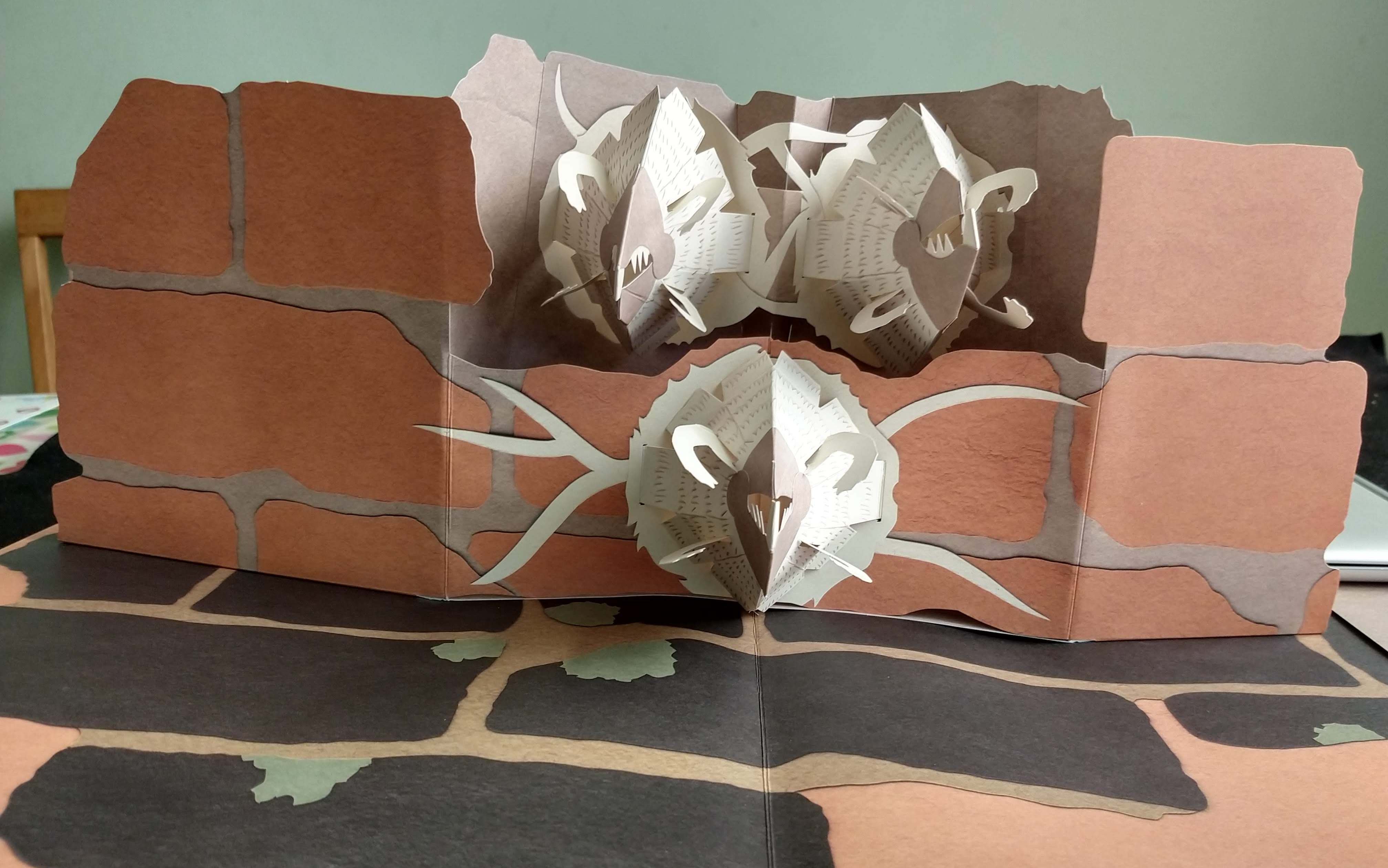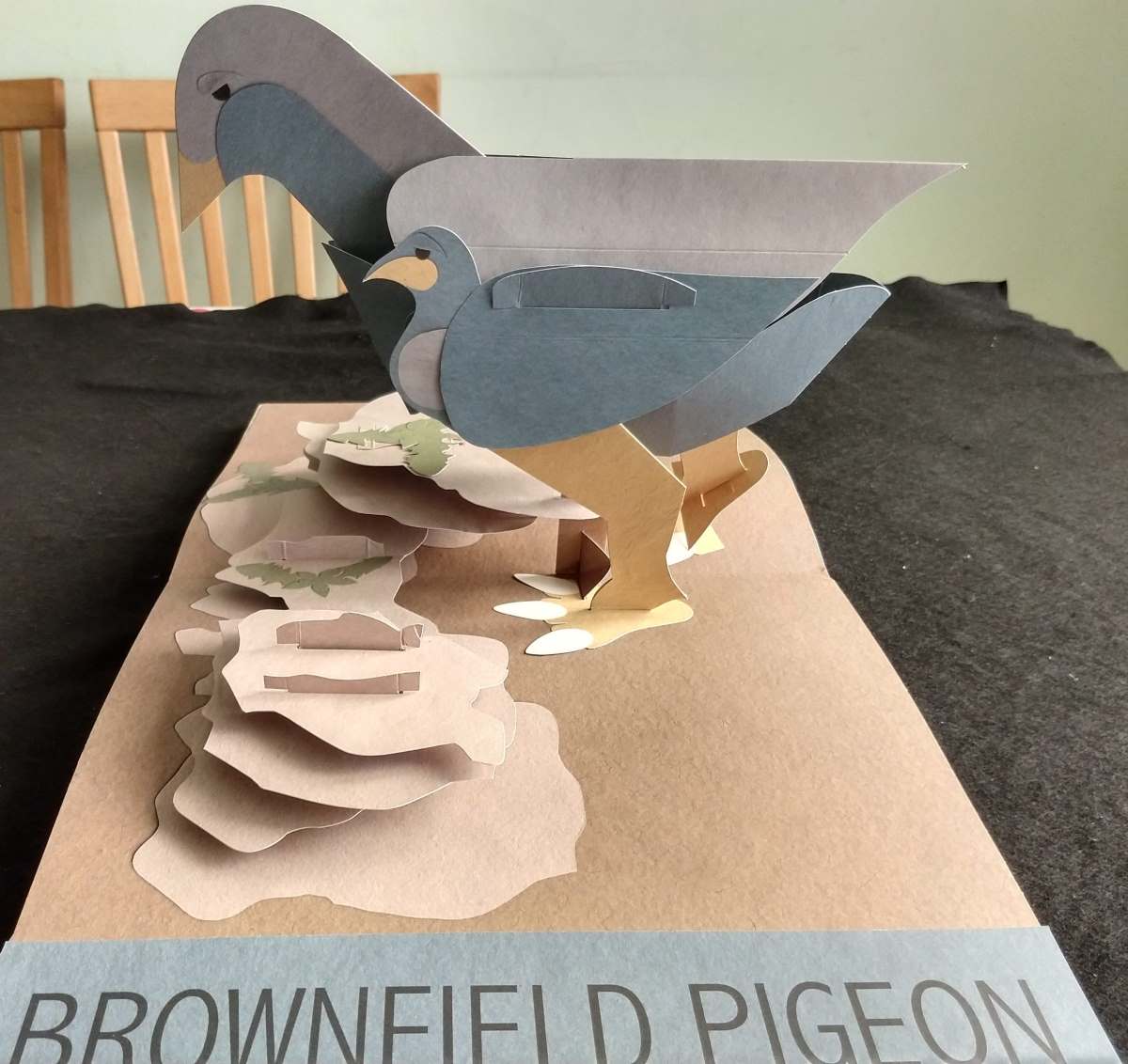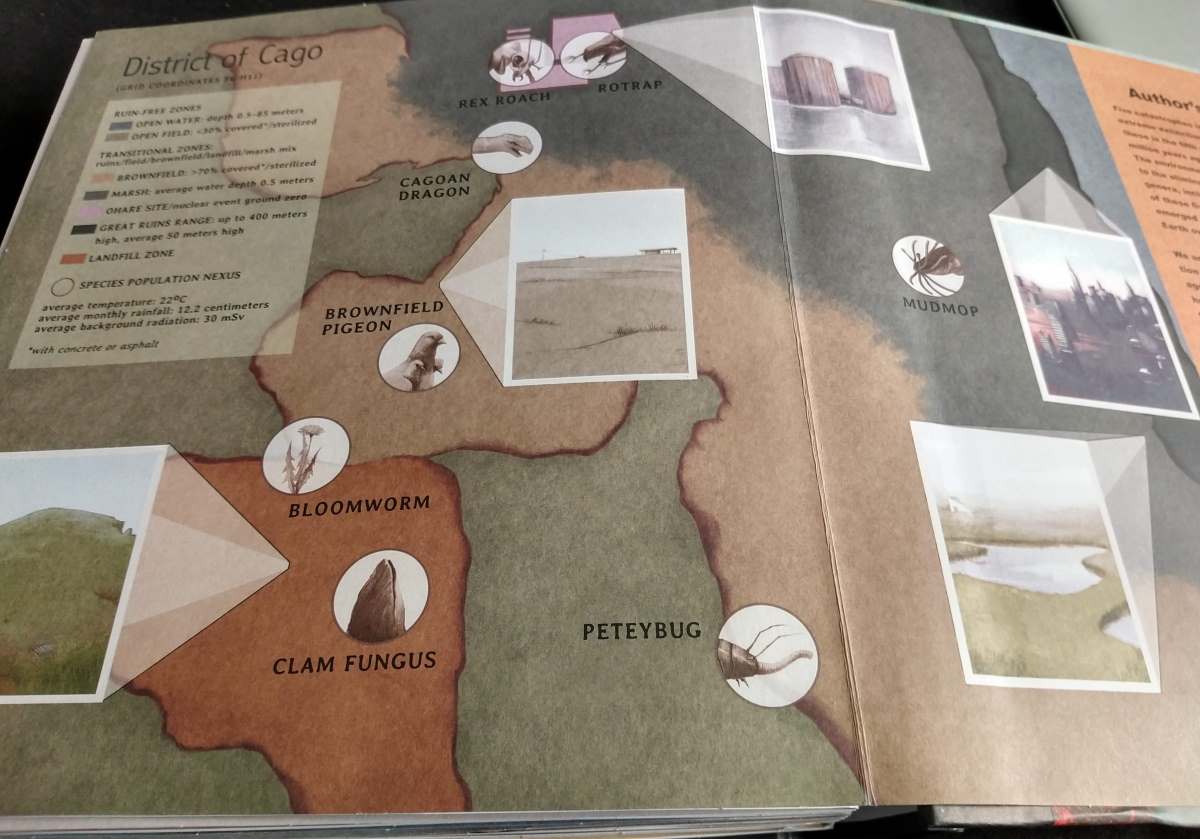This week’s word is ‘Extinction.’
Beyond the Sixth Extinction: A Post Apocalyptic Pop-up: Just by the title you can tell that this week’s book is one of the more unusual I’ve featured in my Word Wednesday column.
It’s based on Elizabeth Kolbert’s popular science book The Sixth Extinction, a book that suggests that Planet Earth is on the brink of another massive extinction, much like the one that killed the dinosaurs. In Beyond the Sixth Extinction, Shawn Sheedy and Illustrator, Jordie Solano imagine what life on Earth might be like after much of its existing flora and fauna has been destroyed.
What is Beyond The Sixth Extinction?
It’s an educated extrapolation of life on Earth in the year 4847. Humans still exist in some capacity, as this is a biological field guide, yet a massive catastrophe has occurred. The species in the book have been found in the district of “Cago” – “a massive urban center that flourished from 1837 to 2620.” Cago, near “Lake Mishkin” is Chicago.
The book opens with a detail of the six extinctions, the first five real, the sixth, imagined but scarily plausible, the way we are currently abusing the planet. The previous Cretaceous-Paleogene extinction, 66 million years ago suffered a 50% general loss (according to fictional “4840 figures”, I’m not sure what the currently accepted percentage is).
The sixth extinction, the Anthropocene extinction, is pegged at causing 80% genera loss.

To get around the quick evolution of massively different species, a detailed preamble suggests rising temperatures and high background radiation may have accelerated the evolutionary process.
Each creature from the book is rendered in amazing 3D detail with a paper/card pop-up. After each pop-up, there is a double page spread that details the science behind the creature and how it evolved. This describes its habitat, relative size, and a description of how the organism fits into the evolving ecology of the region. The “Rexroach,” for example, can absorb radiation without harm.
As well as informative text, the descriptions are filled with color illustrations that detail what the creature might look like in its (un)natural environment.

Why Read Beyond the Sixth Extinction?
This is most certainly a singular book. One that, I would imagine, has a niche appeal. Nevertheless, if you’re looking for an out-there gift for a biologist, ecologist, or just a plain old apocalypse loving science fiction fan, this book has much to be admired.
The book is more than just pretty pictures and impressive cardboard sculptures (though they are exquisite). Some serious thought has gone into to how creatures might evolve in complex and harsh conditions. Such as the “Peteybug” a woodlouse that can break down polycarbonates into a “nutrient-rich slurry.” This woodlouse with a proboscis is a sight to behold.
Then there’s the Brownfield Pigeon. Many real-world pigeons look like they’ve evolved in a harsh and unforgiving environment, but they have nothing on the Brownfield Pigeon. The Brownfield Pigeon (which eats Peteybugs by the way), thanks to living in a landscape devoid of perches and nest-building materials has developed brood pouches, “an alternate strategy for incubating eggs and protecting immature young.”

I love the way the creatures in the book reference one another giving the sense that this is a proper working ecosystem, with each animal fulfilling its role in maintaining a (just about) liveable environment.
The cardboard engineering that has gone into the book is truly something special. Though some of the animals are not for the squeamish. There are some pretty gross creatures in here. Not least of all the bat-like Rotrap that lives fixed to the wall, vomits all its food after it’s digested it and has Rexroach’s larvae living inside of it. This is not a book to be read at the dinner table and not just because greasy fingers will spoil its cardboard constructions.
Beyond the Sixth Extinction is like nothing else I’ve read before. It’s a work of art, its steeped in science and a warning against the perils of environmental destruction. It entertains and informs in equal measure, and comes with a little bit of revolting sauce on the side!
If you’d like to pick up a copy of Beyond the Sixth Extinction you can do so, here in the US and here, in the UK.
If you enjoyed this post do check out my other Word Wednesday posts. Including the Halloween ready, pop-up Midnight Monsters.

Disclosure: I received a copy of the book for review.


